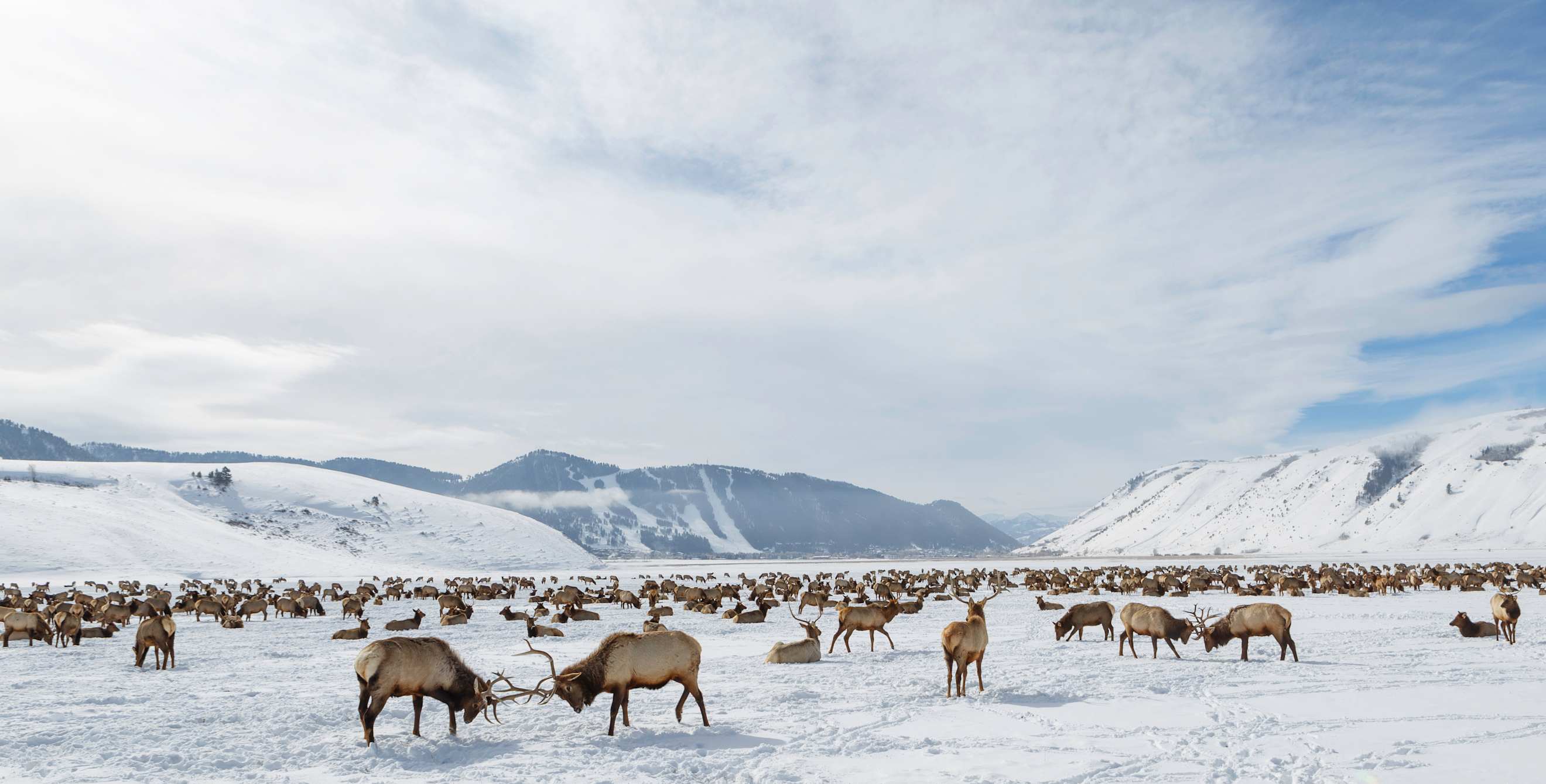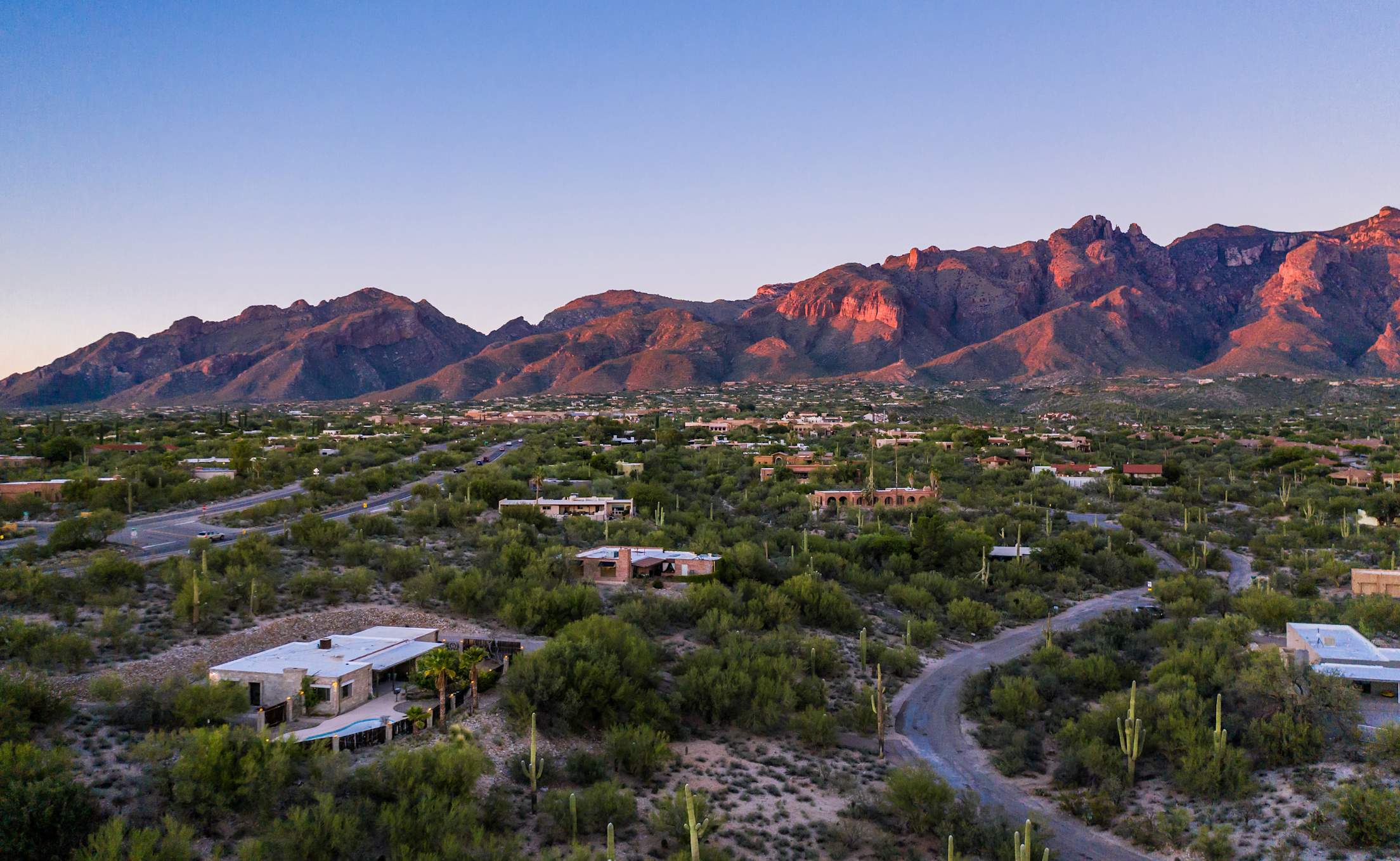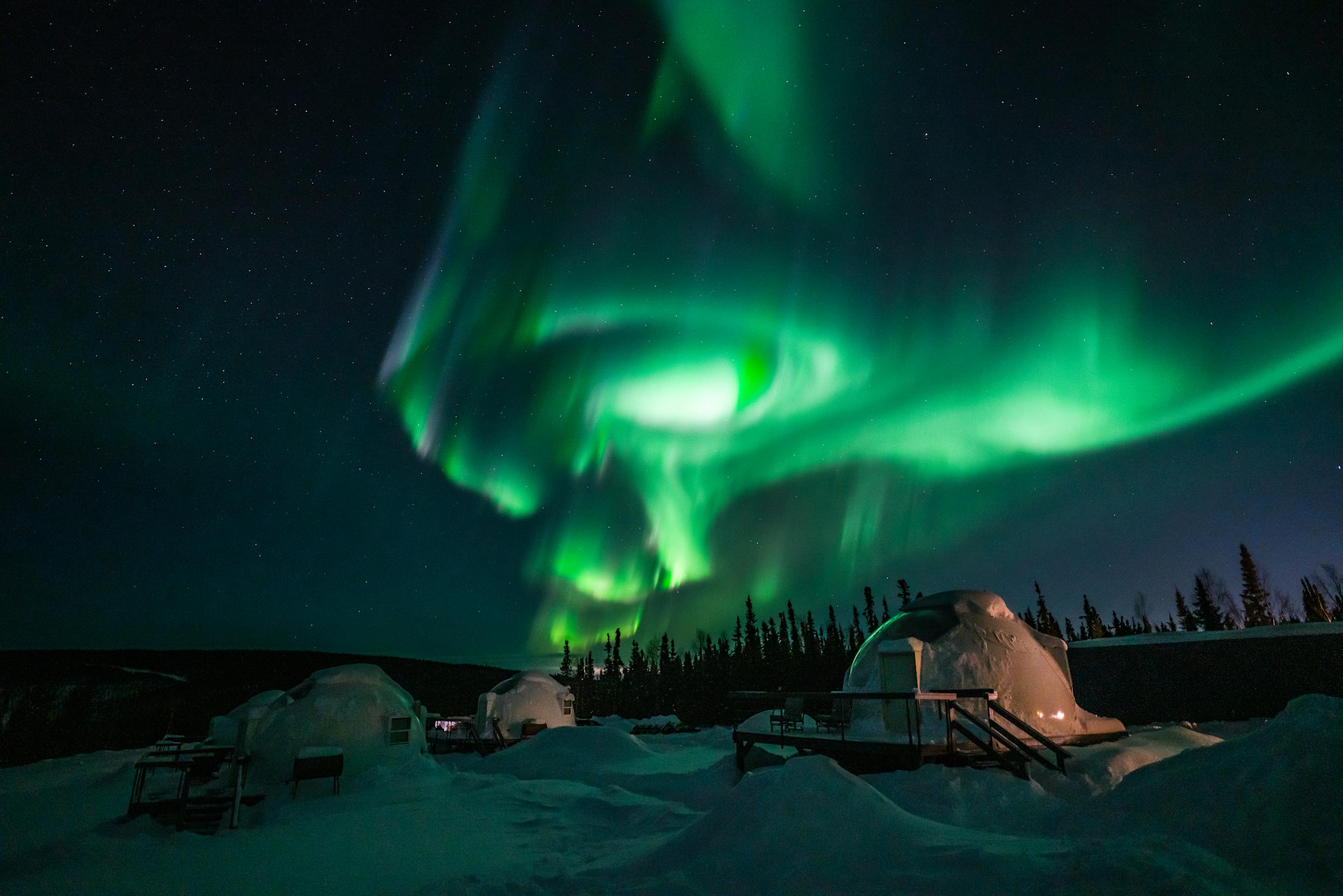
Discover the Best Winter Getaway for You
Whether you’re interested in dog sledding or the desert, there’s a trip in the West for you.

The possibilities for a winter getaway in the West are as varied as they are vast—from hiking in the warm southwest to aurora watching near the Arctic Circle. Here are six ideas to get you started.
Cozy Cabin Vibes: Jackson Hole, Wyoming
Over the last decade, this valley in northwestern Wyoming has been leaning more cosmopolitan than authentically rugged West, but its coziness hasn't changed. In Jackson, the valley’s biggest town, take in the charm at Coelette, where a highly seasonal menu highlights local growers and producers and includes dishes such as terrine and elk short loin served inside a cabin built in 1915. Next door, in a former blacksmith shop, you can saddle up for a Wagyu beef roll at King Sushi, where local ski makers Igneous Ski used laminated maple and ash to hand craft the bar.
If you’re looking to hang out with the locals, take a horse-drawn sleigh ride into 25,000-acre National Elk Refuge north of downtown to see the winter home of nearly 7,500 elk before snuggling into a cabin of your own at Trail Creek Ranch, located just above the hamlet of Wilson. Here you can cross-country ski on eight miles of groomed trails, snowshoe or backcountry ski on Teton Pass, and join the ranch hands on the “hay sleigh” to feed the horses.
On the western side of the valley, Jackson Hole Mountain Resort is one of the best ski resorts in the country (and has the crowds to prove it). But just five blocks from Jackson’s Town Square is Snow King, which was the first ski area in Wyoming when it opened in 1939, but is now best known for more than 500 acres of line-free skiable terrain.

Desert Escape: Tucson, Arizona
Sure, you might come here just to warm up—the city boasts a whopping 325 sunny days each year—but the vibrant local food scene will surely distract you from any winter chill. In 2015, Tucson became the first city in the U.S. to be designated a UNESCO City of Gastronomy because of its deep and multicultural food history. The O'odham peoples cultivated crops here 4,000 years ago, and over the past several centuries colonists, settlers, and immigrants from Spain, Mexico, and China applied influences of the food from their homelands to local ingredients.
Taste a piece of history at the oldest continuously operated family-owned Mexican restaurant in the country, El Charro Cafe, which celebrated its 100th anniversary in 2022. Grab a table in the original downtown location and order the carne seca—dried beef—enchiladas. In midtown, Tito & Pep highlights local ingredients—think steak with sides of roasted chiles and charro beans and corn dumplings inspired by owner John Martinez's grandmother's tamales. The Tucson native was even named a James Beard Foundation Semi-Finalist for his mesquite-fired menu.

Northern Lights Adventure: Fairbanks, Alaska
In the daylight, the air in Fairbanks glitters with diamond dust, a romantic term for ice crystals that seemingly hang in the air. But the real show starts when night falls. Between late August and late April, the aurora borealis dance across Fairbanks’s night sky an average of four out of five nights. Get the best views on an aurora adventure: Join a dog-mushing or snowmobiling expedition to a local lookout or huddle around a backcountry bonfire. You can also watch the lights from your bed at Borealis Basecamp, which has 20 fiberglass igloos with windows in their roofs, five new tiny homes with floor to ceiling windows, and a staff that does aurora wake-up calls. Soak in the glow at the outdoor hot spring–fed pool at Chena Hot Springs, or catch glimpses while dining on Alaskan salmon at the Pumphouse Restaurant and Saloon, which is furnished with antiques from Alaska’s gold rush days.

Wildlife Watching: Yellowstone National Park and Paradise Valley, Montana
In the 1990s—about 70 years after being hunted to near-extinction in and around Yellowstone National Park—31 gray wolves were reintroduced to the area. Today, at least 95 wolves call the park home and hundreds more live in the surrounding wild lands, including Paradise Valley just north of the Gardiner entrance. Yellowstone is one of the best places to see these apex predators in the wild, and winter is ideal because they are easier to spot against the snowy landscape (the park gets an average annual 12 feet of snow). Join Yellowstone Forever Institute for a day-long private tour of wolf and bison watching with a naturalist in the park.
When you’re done, warm up at Paradise Valley’s Chico Hot Springs Resort. Here you’ll find luxury cabins, a Northern Pacific caboose redone in Victorian style, a modern main lodge, and a historic lodge that opened as a boarding house for miners in 1900. It also has an open-air, spring-fed hot pool and one of the best restaurants in Montana. Visit for dinner and order the Beef Wellington: angus tenderloin topped with duck liver pâté and mushroom duxelles, carved tableside.
Ski Hideaway: Sundance, Utah
Tucked into the northern fork of Provo Canyon, Sundance isn’t hard to get to, but it’s blissfully overshadowed by a half-dozen bigger ski areas, such as Alta, Park City, Deer Valley, and Snowbird, that draw the masses. At the intimate resort you’ll find a quiet mountain respite with ski runs for every level and rejuvenating escapes apres ski. A new mid-mountain lift opening this winter brings the resort’s runs to 60 and total skiable acres to 550. There are also 15 kilometers of groomed cross country ski trails, including Mica’s Mile to Middle Earth, which is perfect for beginners, and Lena’s Loop, which is better suited for intermediate and advanced skiers.
When you’re done playing in the powder, take a class at the art studio where you can learn candle making, silversmithing, drawing, and journal binding, among other skills. At the spa, indulge in complete relaxation with the signature 90-minute gemstone aromatherapy energy-balancing massage. Finally, take in the views of the Heber and Utah Valleys from the top of the 8,250-foot-tall Arrowhead Summit where Bearclaw Cabin, the only mountaintop lodge in Utah, serves street tacos, nachos, and burritos.

Ocean Escape: Inverness, California
In December and January, hundreds of northern elephant seals begin arriving at the beaches and headlands of Point Reyes National Seashore to mate and give birth to pups. While the seals dominate the shore’s scenery, look out over the ocean in January and you might catch a glimpse of gray whales migrating south.
Other perks of a winter visit here? The views, especially of the Point Reyes Lighthouse from 1870, are clearer and the human crowds are a fraction of what they are in the spring and summer. Away from the ocean, lean into the area’s agrarian roots. Stop by the delicatessen, bakery, and tap room at Inverness Park Market for a full meal or picnic provisions from local purveyors. At Point Reyes Farmstead Cheese Company, enjoy a private cheese tasting and tour of its dairy farm. Cap off a day by the shore with fresh oysters caught by local fishermen in nearby Tomales Bay at Saltwater Oyster Depot.